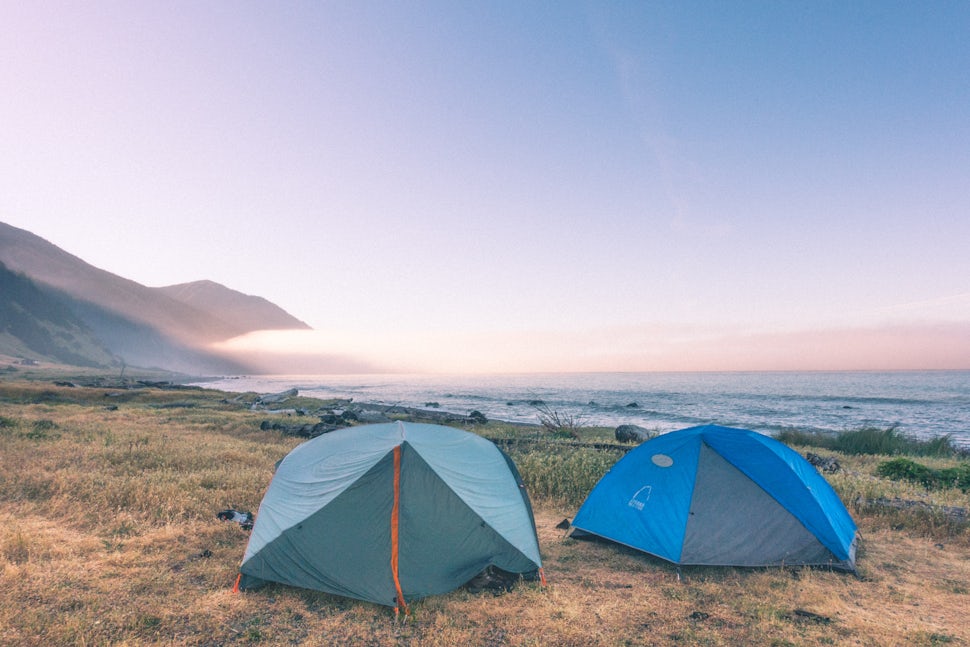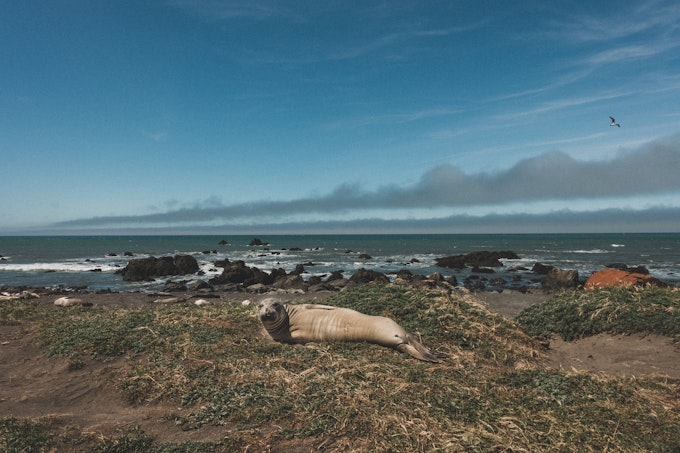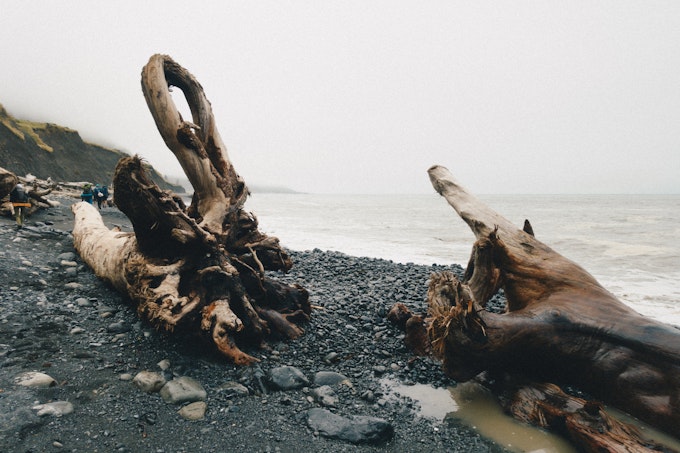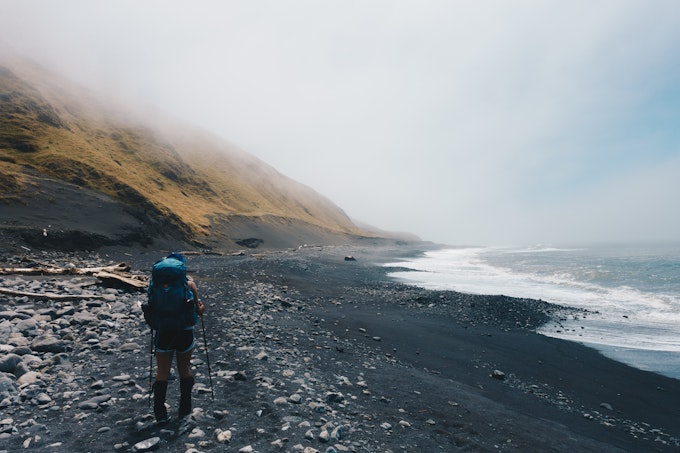8 Tips for Backpacking California's Lost Coast
Solitude on California's rugged coast

The Lost Coast is a 53-mile route along Northern California’s rugged coast, untouched by Highway 1. A 5 hour drive from San Francisco, the Lost Coast offers solitude, wildlife, and the sounds of ocean waves.
For 3 days we meandered along the coast, feeling the ocean breeze against our packs and looking out into the hills that were left uncharacteristically green after a wet winter. As we moved further south of the Lighthouse, we were greeted with the solitude of crashing waves and occasional seabirds flying above. In the first day alone, we had a close encounter with harbor seals, enjoyed sunset on our own private section of the beach, and happened upon a whale carcass washed up on shore. It is during these kinds of moments that you realize how special and wild California can be.
Here are a couple of tips to get the most out of your backpacking trip to the Lost Coast:
1. Book a one-way shuttle from Black Sands Beach to Mattole River
The road from Black Sands Beach to Mattole River is bumpy, windy, and tiresome. Even if you have a large group of friends with two vehicles, it's better to book a one-way shuttle with one of the companies out in King Range.
2. Start your day early
There are no official campsites on the Lost Coast, but the hikers that backpack through every year have made unofficial sites with benches, cutting boards, and fire pits out of driftwood and rocks. Not all campsites are made equal, so head out early to snag the best ones and enjoy the rest of your afternoon. (Feel free to PM me for specific site locations!)
3. Pre-plan your meals and bear canister allocation
Bear canisters are required on the trail and can be rented from multiple locations if you do not own any. Since you have to pack all of your food, trash, toiletries, and other scented items, it’s best to pre-pack everything in your bear canisters to make sure you have enough space for everything.
Our bear canisters were packed a little tight and we had a marshmallow explosion on Day 1, whoops! 😃
4. Buy the detailed BLM map of King Range National Conservation area
There are a few maps floating around, but the best one is BLM’s map. Even though the trail is very easy to follow (just hug the coast), the map provides detailed information on streams that don’t show up on less scaled maps. We used a few of these streams to refill water and save pack weight. You’ll only need a 1-2L bottle on this hike since there are so many creeks along the way.
5. Hike aware
The beauty of the Lost Coast doesn’t come without some costs. Watch out for ticks, rattlesnakes, and poison oak along your hike. Insect repellent will help prevent ticks. We found some on our clothing but none attached. Poison oak is also rampant along the grassy areas of the hike, some reaching out into the trail and brushing your ankles.
6. Pack the right boots for you
The trail ranges from sand and pebbles to large rocks and grass. Running shoes are probably not the best idea, but you don’t necessarily need rugged high-ankle boots either. If you have strong ankles and feet, mid-ankle boots or lightweight hiking boots are fine. I personally like the flexibility of my Salomon boots and don’t feel the need to invest in something sturdier. Know your body and pack for whatever you will feel best in!
7. Bring gaiters
Small pebbles and sand characterize most of the Lost Coast trail. Gaiters will help keep those pesky rocks out of your shoes so you don’t have to stop every 30 minutes to take them out. As an added bonus, they help keep out water during the multiple stream crossings!
8. Make sure your rainfly works
The Lost Coast can be very rainy for most of the year. Even during the summer, the night fog creates a lot of condensation on your tent. Having a good rainfly will ensure a good nights sleep so your tent isn’t soaked in the morning.
Mel Chen
We want to acknowledge and thank the past, present, and future generations of all Native Nations and Indigenous Peoples whose ancestral lands we travel, explore, and play on. Always practice Leave No Trace ethics on your adventures and follow local regulations. Please explore responsibly!
Do you love the outdoors?
Yep, us too. That's why we send you the best local adventures, stories, and expert advice, right to your inbox.











